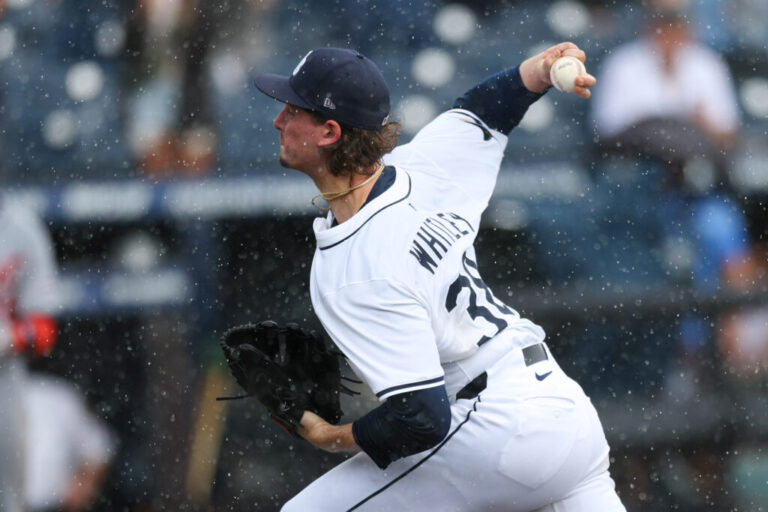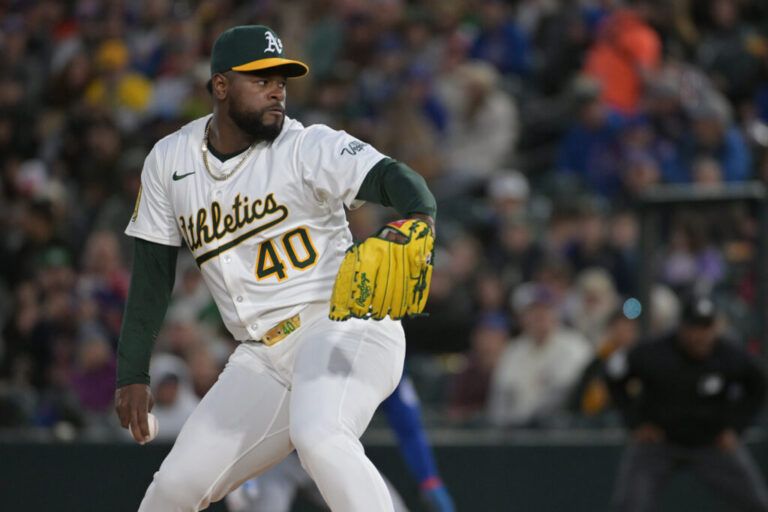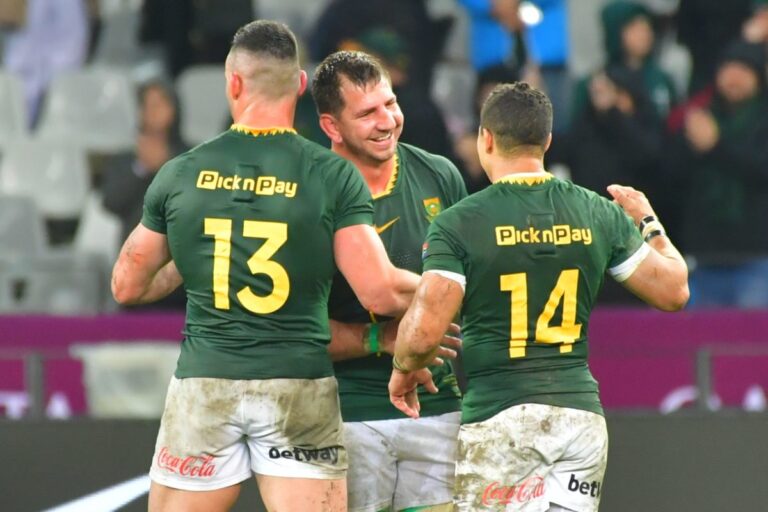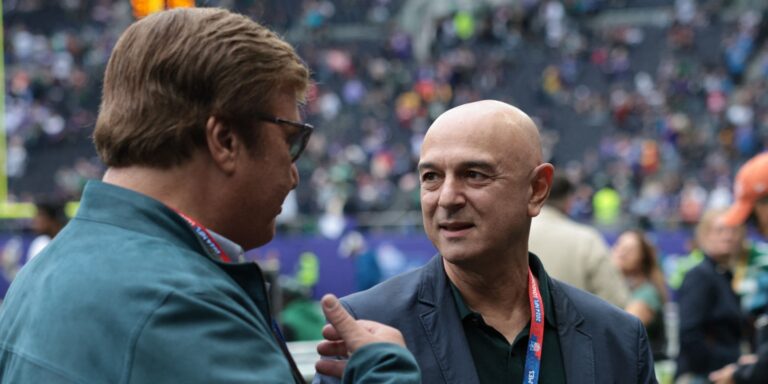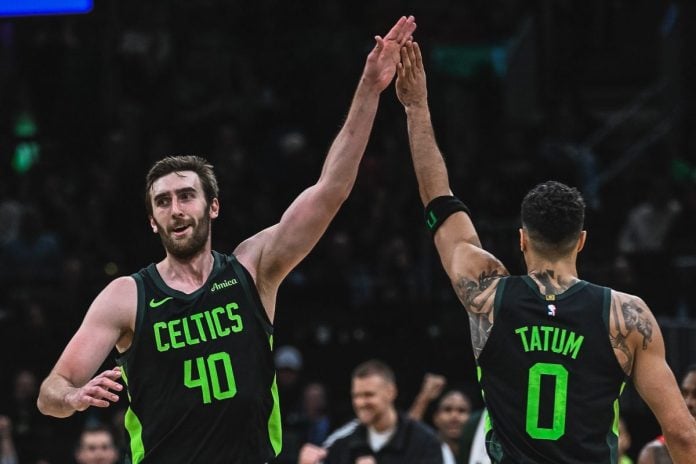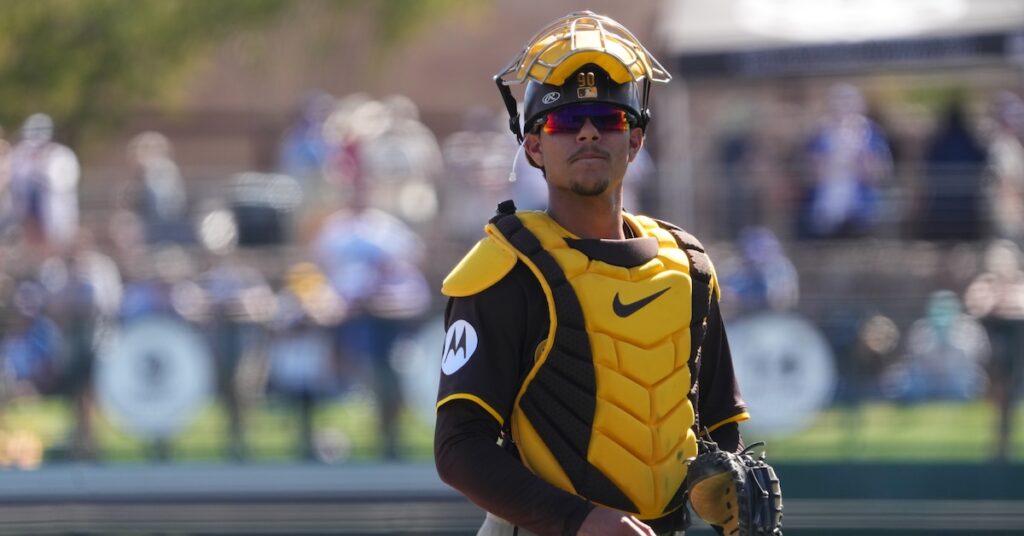
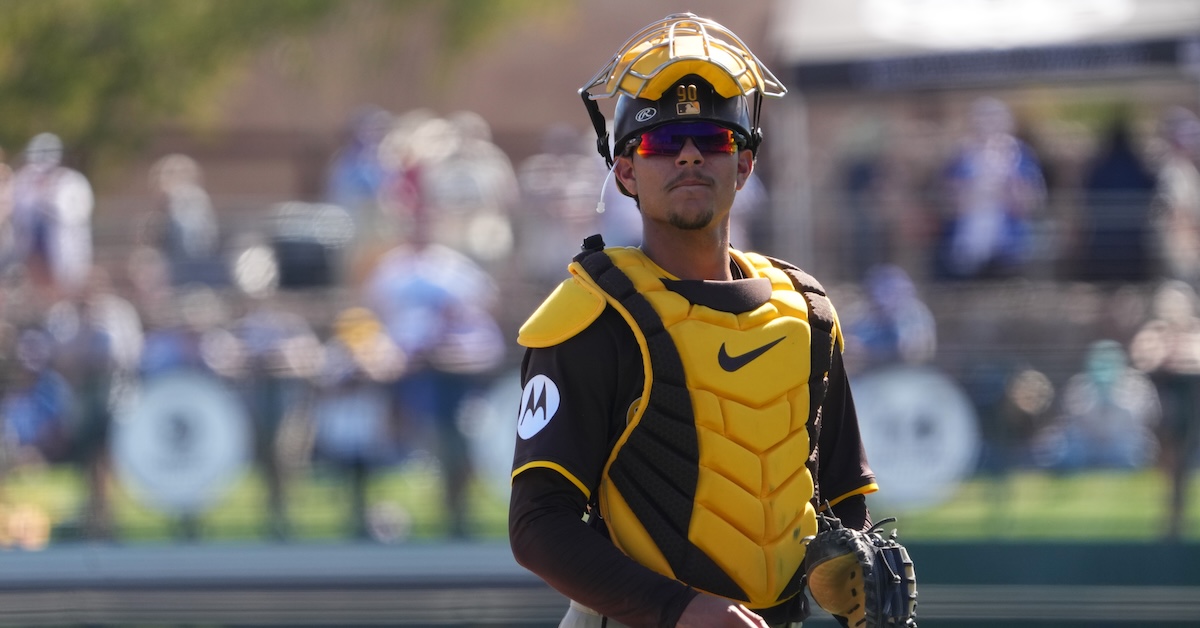
Below is an analysis of the prospects in the farm system of the San Diego Padres. Scouting reports were compiled with information provided by industry sources as well as my own observations. This is the fifth year we’re delineating between two anticipated relief roles, the abbreviations for which you’ll see in the “position” column below: MIRP for multi-inning relief pitchers, and SIRP for single-inning relief pitchers. The ETAs listed generally correspond to the year a player has to be added to the 40-man roster to avoid being made eligible for the Rule 5 draft. Manual adjustments are made where they seem appropriate, but we use that as a rule of thumb.
A quick overview of what FV (Future Value) means can be found here. A much deeper overview can be found here.
All of the ranked prospects below also appear on The Board, a resource the site offers featuring sortable scouting information for every organization. It has more details (and updated TrackMan data from various sources) than this article and integrates every team’s list so readers can compare prospects across farm systems. It can be found here.
Other Prospects of Note
Grouped by type and listed in order of preference within each category.
A Phalanx of Relief Depth
Garrett Hawkins, RHP
Harold Chirino, RHP
Luis Germán, RHP
Vicarte Domingo, RHP
Austin Krob, LHP
Manuel Castro, RHP
Enmanuel Pinales, RHP
Raul Brito, RHP
Clark Candiotti, RHP
Maikel Miralles, RHP
Hawkins is a Canadian righty with a deceptive fastball who is coming off TJ and struggling with walks. Chirino is a 27-year-old Venezuelan righty and former Brewer who signed a minor league deal during the offseason. He has an incredibly whippy arm action that generates a 94-96 mph fastball with hellacious tail, which he doesn’t command. It produces a ton of groundballs. Germán is a 23-year-old Dominican righty who’ll touch 99 but has struggled with command for his entire career. Domingo was a 19th rounder out of the University of British Columbia (the same school Hawkins went to) whose fastball is averaging 20 inches of vertical break and missing bats at a plus rate at Lake Elsinore. He has a shot to be a big league reliever if a second pitch emerges, and his changeup looks like it’s his best shot. Krob has been written up on the Padres list as a slider-heavy lefty reliever in the past, but even as he’s shifted into the bullpen in the minors, he hasn’t enjoyed a velo bump (his fastball has barely generated a whiff), nor has his slider performed like even an average pitch. Castro is a 5-foot-8 Mexican reliever at Double-A San Antonio. He has a plus curveball and sits 93-94. Pinales is a 24-year-old Dominican righty sitting 94 and missing a ton of bats at San Antonio with an above-average slider. Brito is a 28-year-old Dominican righty whose career began with the Marlins before he signed a minor league deal with the Padres in December of 2022. He struggles with walks but sits 95 with riding life, and he’s striking out well over a batter per inning in El Paso. The son of former 16-year big league knuckleballer and current D-backs broadcaster Tom Candiotti, Clark had a nomadic amateur career that saw him at five schools in five years, finishing at Arizona in 2024. He’s a big 6-foot-4 righty with a good slider and is a potential middle reliever. Miralles is a 20-year-old righty with a 92-95 mph fastball and an above-average upper-80s slider.
Power-Over-Hit Sleepers
Marcos Castañon, 2B/3B
Braedon Karpathios, OF
Rosman Verdugo, INF
Sean Barnett, OF/RHP
Victor Figueroa, 1B
Castañon is a 26-year-old bat-first depth infielder from UC Santa Barbara. He has plus bat speed but no real defensive position, and he’s chase prone. No, that’s not the villain from the second Ghostbusters movie. Karpathios is a Lancaster, PA native who went to a Maryland JUCO and signed as an undrafted free agent in 2022. He has developed plus power but is whiffing too much for the main section of the list. Verdugo is a versatile 20-year-old infielder with above-average raw power projection, but he’s striking out 37% of the time at Fort Wayne after hovering a little below 30% for the past couple of years. Barnett was a two-way player at Division-II Wingate who had a huge junior season at the dish (including 26 bombs), but has swung and missed a ton since entering pro ball. He may ultimately revisit the mound full-time, as he’s been into the mid-90s during developmental activity. He has yet to pitch in an actual pro game, though. Figueroa is a 240-pound power-hitting first baseman who clubbed a bunch of homers on the complex before he was promoted to Low-A near the end of May. He’s 21.
Tough to Bucket
Eric Yost, RHP
Yimy Tovar, INF
Luis De Leon, INF
Kasen Wells, CF
Yost was a Day Three pick out of Northeastern with a plus curveball and starter’s control. He’s pitching well at Fort Wayne even though his fastball sits about 90 mph. Tovar is a 19-year-old Venezuelan skills-over-tools infielder hitting in the heart of the ACL order after two years in the DSL. He has advanced feel for contact, but he’s of smaller build and lacks big physical projection. He’ll need to keep making premium rates of contact as he climbs to be considered a true prospect. De Leon, 19, is a compact switch-hitter who is having a nice rebound in the ACL after a really tough 2024. He’s short to the ball and sprays liners to all fields. Basically in the same bucket as Tovar, he lacks strength projection. Wells was a Day Three pick out of Weatherford College last year. He can really go get it in center field but has a slow bat.
System Overview
This isn’t an especially good farm system despite the two potential stars at the very top. The Padres lack depth both overall and in terms of potential impact. There aren’t even any near-ready utility or platoon bats in this system. Once you get past Salas and De Vries, there are two exciting teenage pitchers, a handful of high-upside relievers, and then a bucket of 40s. A big part of why is because the Padres have been aggressive buyers during the last few trade deadlines. There are 23 players who the Padres originally drafted or signed who are now prospects in other orgs, and that doesn’t include the players from the Juan Soto trade (and other deals) who have graduated and lost rookie eligibility.
The Padres are good at scouting. Processes be damned, the club can identify players who are actually good, and if those guys can’t crack an everyday role in San Diego — the team’s standards are pretty exacting — they at least tend to generate interest from other teams. This often includes obscure, small school prospects who are more sleeper-y than prospect-y, and there are many of those on this iteration of the Padres list: undrafted guys, players from D-II and NAIA schools, high schoolers who weren’t showcase fixtures, and amateur players from Asia. This is a creative org that leverages the relationships their brain trust builds with players and their families. They aren’t afraid to cut against the analytical grain and make decisions that are questionable from the standpoint of sustainability when it comes to roster building, or that might be initially unpopular with a fanbase that, other than the Wave and San Diego FC, has just one team in town to care about and nitpick.
San Diego still isn’t especially good at development, though. In particular, it is common for pitchers to get better once they’re one of the exiled, even when they join clubs that have struggled to get traction, like the Marlins or Nationals. It’s one thing to make guys like David Morgan better. A major league franchise ought to be able to make the guy whose most relevant reps came with the Portland Pickles better than he was when they signed him. It’s the inability to coax impact out of the seven-figure draftees that’s maddening, players who the club pumps real resources into who they can’t ripen. Oddly, maybe even accidentally, the Padres’ approach to international scouting (often to give one guy a huge bonus) fits with this. Why bother spreading your bonus pool out to a bunch of players when those players aren’t likely to get better under your wing? Instead, get the guy talented enough to succeed in spite of your shortcomings.
This is an utterly fascinating franchise that has found ways to out-talent most of the rest of the NL for the better part of the last half decade. The Padres have made the playoffs three of the last five years even amid managerial strife (which appears solved; the players seem to have genuine rapport with Mike Shildt), and are again tilting successfully in maybe the league’s best division even though they both lack pitching depth and have dealt with meaningful absences in that part of their roster.

